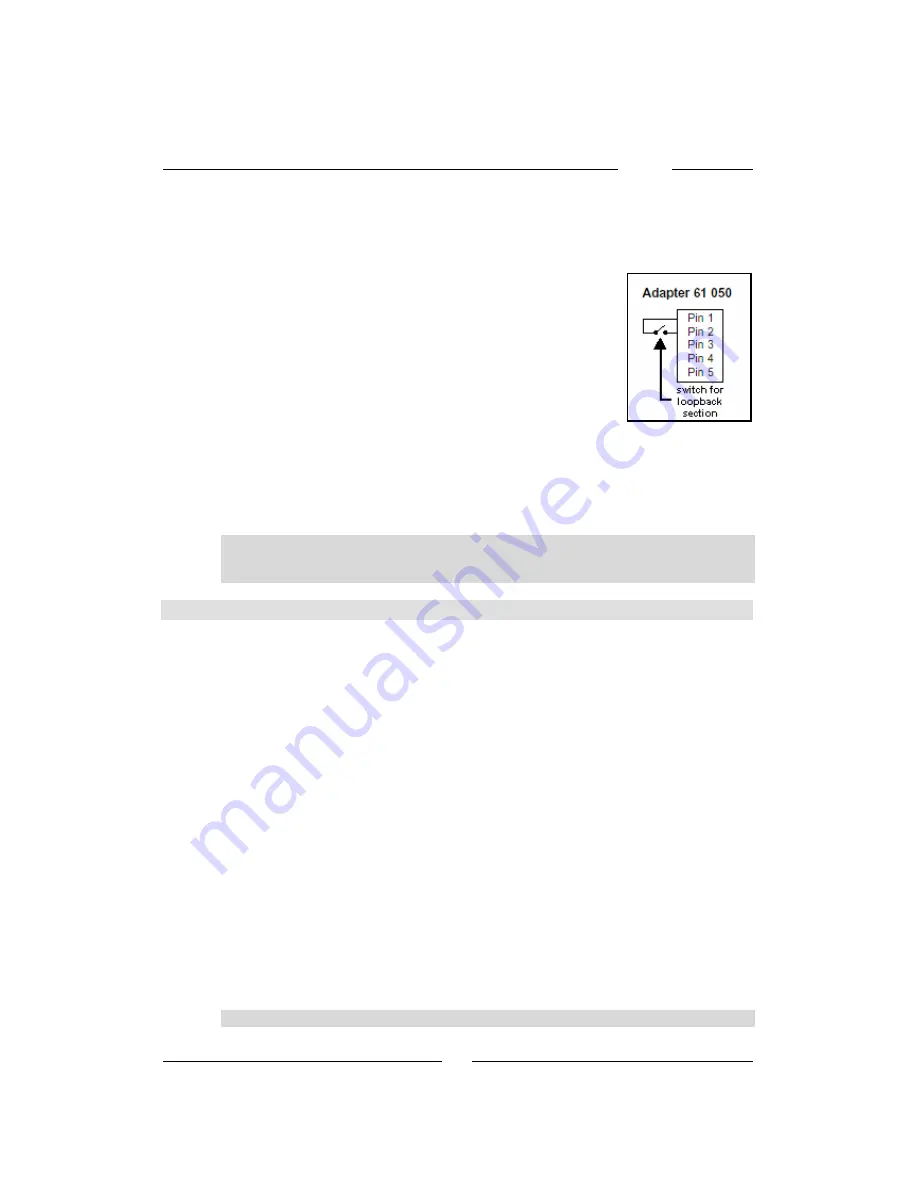
DAISY
33
to the same rail, so that a crossing from one electrical circuit to an
‘adjacent’ electric circuit (layout section) will not cause a short.
Connection
In order to allow connection and use of a loop-
back controller or half-automatic loopback con-
troller, the Power2 provides an input which can
toggle the locomotive driving direction (track
polarity). When Pin #1 and Pin #2 of the 5-pole
“Booster” connector of a Power2 are connected
together, then the Power2 will toggle its output
polarity. Depending on the status of [f7], this may
also apply to breaking the connection between
Pin #1 and Pin #2 – which may be desirable in
case of some loopback controllers.
The connection between Pin #1 and Pin #2 may be conveniently done
using our Adapter 61 050.
Pin #1 of the Power2 “Booster” connector is the pin which is closer to
the Power2 “LocoNet” connector.
Important
The last Power2 in a chain of Power2’s controlling a layout in analog
mode
cannot
be used to control a loopback section – check also the
next section 4.7 (“DCC Digital Turnout Booster”).
4.7 Power2 as DCC Digital Turnout Booster
It is possible to configure the last Power2 of a chain of Power2’s
controlling a layout in analog mode to interpret the turnout/signal
commands issued, through LocoNet, by throttles or other devices (e.g.,
IB-Switch, Switch-Control, etc.) and convert them to digital commands
for DCC accessory decoders. This allows for analog train operation and
digital turnout/signal control – even an automatic analog layout
operation becomes possible, e.g. by using one or more IB-Switch(es)
and analog-compatible occupancy detection modules (like our 43 300
and 43 500 modules) along with LocoNet feedback modules (like our
63 350 modules).
Obviously, if this option is used, the last Power2 cannot be used for
driving a section of an analog layout since, indeed, its power output is
being used for driving the digital turnout decoders.
A Power2 can be configured to operate as a DCC digital Turnout
Booster by connecting Pin #1 and Pin #2 of the Power2 “Booster”
connector (either using a typical PC style “jumper” or using our adapter
61 050). This connection must be permanent and precede power-up.
Pin #1 of the Power2 “Booster” connector is the pin which is closer to
the Power2 “LocoNet” connector.
A Power2 which has been configured for “ DCC digital Turnout Booster”
operation can control up to 1024 DCC turnout addresses (turnout
addresses 1 through 1024).
Attention
Only DCC turnout decoders (DCC accessory decoders) are supported.
Summary of Contents for DAISY
Page 1: ......
Page 25: ...DAISY 25 Power 2...


































